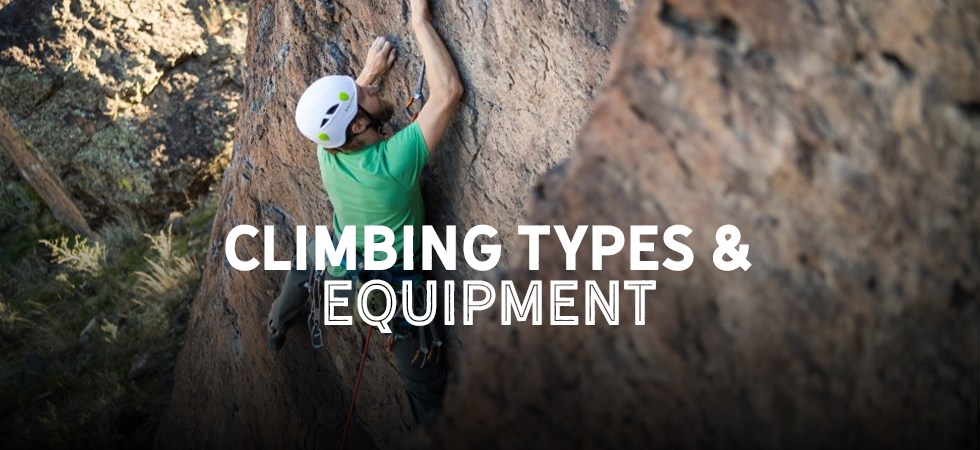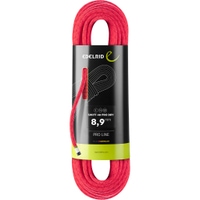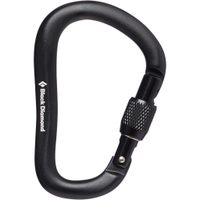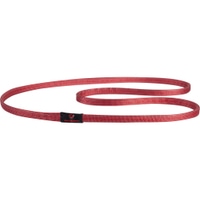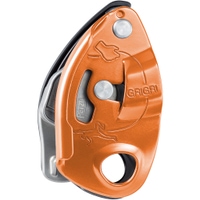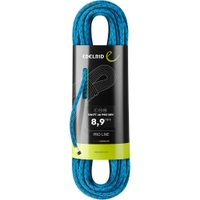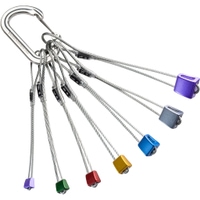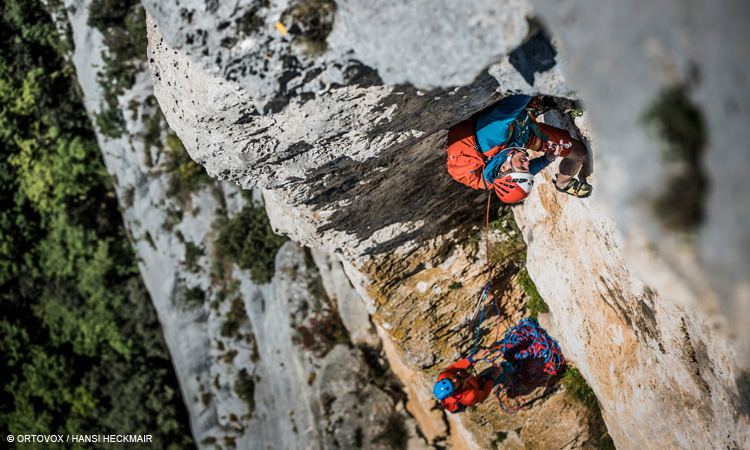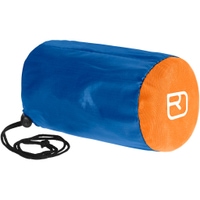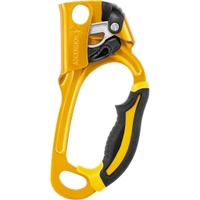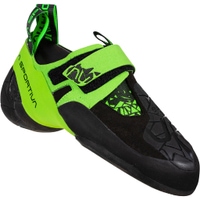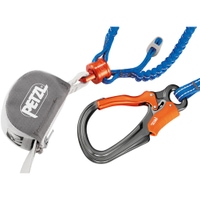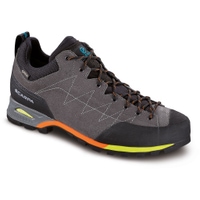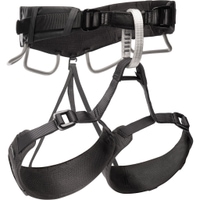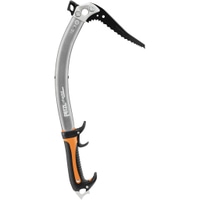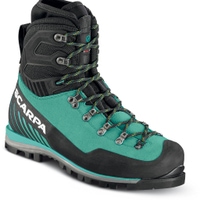Climbing is not just climbing. As with other sports, there are a variety of different disciplines – each has its own characteristics and its own appeal. In this post, we will, therefore, show you which types of climbing exist, what is special about them and what equipment you need.
overview: climbing types & equipment
When people talk about climbing today, they usually mean free climbing. Caution: free climbing is not the same as free solo, where climbers go up routes all by themselves without any protection. In free climbing, climbers are always secured with the help of ropes, hooks or slings. However, this material is actually only used for belaying – not for pulling up. Basically, free climbing is about getting your body up the rock using your own muscle strength and technique.
In contrast, there is technical climbing, where the material is used as an aid to ascent – often on rocks where climbers reach their limits through pure free climbing. The range is wide: from pulling up with the help of a sling to “nailing up” with a hammer and piton. In addition to the extreme variant of “nailing up,” there are also more environmentally friendly techniques. For example, “clean technical climbing” involves working exclusively with mobile belay devices such as nuts, friends or cams.
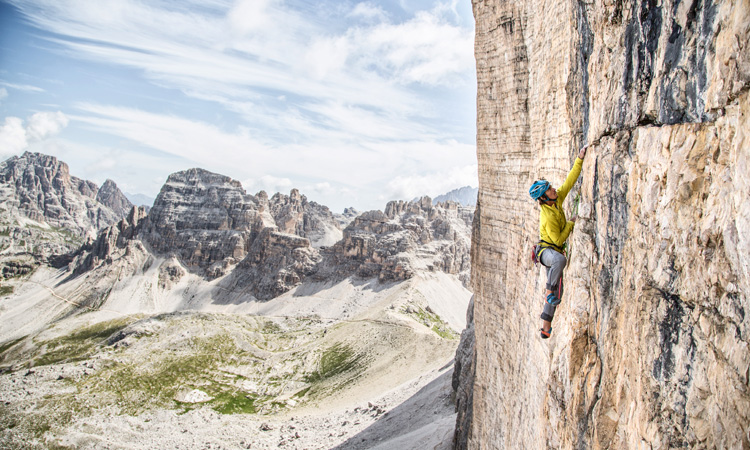
In addition to the broad distinction between free climbing and technical climbing, there are several other types of climbing:
Sport Climbing
Sport climbing refers to free climbing in halls or outdoors on short routes with only one pitch. These are permanently secured with the help of fixed anchors in the rock, so-called bolts. In these bolts, quickdraws are hung during climbing, serving as a temporary securing point in the event of a fall. As the name implies, the sporting aspect definitely prevails in this discipline as well as the difficutly of the route. Reaching a summit or a beautiful lookout point is only a secondary matter. At the end of the route or the rope length, there is a belay construction, from which the climber can be lowered or can abseil.
Required equipment: climbing shoes, climbing harness, belaying device, climbing rope (dynamic single rope), quickdraws, helmet & chalk bag.
Alpine Climbing
Like sport climbing, alpine climbing is part of free climbing. However, these are much longer routes, so-called multipitch-routes. They usually have the goal of reaching a summit. The lead climber, who climbs first, secures himself at a belay after a completed pitch and belays the second climber – the follower – on the rope behind him. Depending on climbing ability, climbers alternate per pitch, or one always leads. The routes in the alpine terrain are also sometimes climbed technically if difficult passages cannot be climbed freely.
Required equipment: climbing shoes, climbing harness, half rope, hexentrics, friends, helmet, quickdraws (long & short), carabiners, belaying device (Reverso), slings & chalk bag
Trad Climbing
When trad climbing, fixed and drilled securing points in the rock are not used at all. Belaying is done exclusively via mobile climbing protection, such as cams and friends, which are placed in existing cracks or holes. All self-placed belays are retrieved from the rock either during lowering/rappelling or by the following climber. As a result, no traces are left in the rock.
Required Equipment: friends, cams, micro cams, quickdraws, rope, climbing harness, helmet, climbing shoes, etc.
Big Wall Climbing
Big wall climbing refers to climbing very huge rock faces, such as those in the Yosemite Valley in the US or in the South American Patagonia. Since these tours often take several days, overnight bivouacing directly in the rock face is not uncommon. Also, the climbers need to take water, food, and equipment for several days with them – resulting in quite a heavy weight to carry. Often, therefore, the equipment is trailed in a Haulbag – a bag for all the material. Basically, top athletes can free climb big walls, but often they get climbed technically.
Required equipment: climbing shoes, climbing harness, friends, haulbag, sleeping bag, bivy bag, belaying device, rope, quickdraws, carabiners, helmet & chalk bag.
Plaisir Climbing
“Plaisir” is French for joy or pleasure. Climbing takes place on well-secured rocks having easy to moderate difficulty – the joy of climbing is clearly in focus.
Required equipment: climbing shoes, climbing harness, belaying device, rope (dynamic single rope), quickdraws, helmet & chalk bag
Bouldering
Bouldering means unsecured climbing at jump height. Here neither rope nor climbing harness are used. The goal is to master technically demanding routes – on the rock or on artificial climbing walls. A boulder mat on the ground, also called crash pad, catches possible falls.
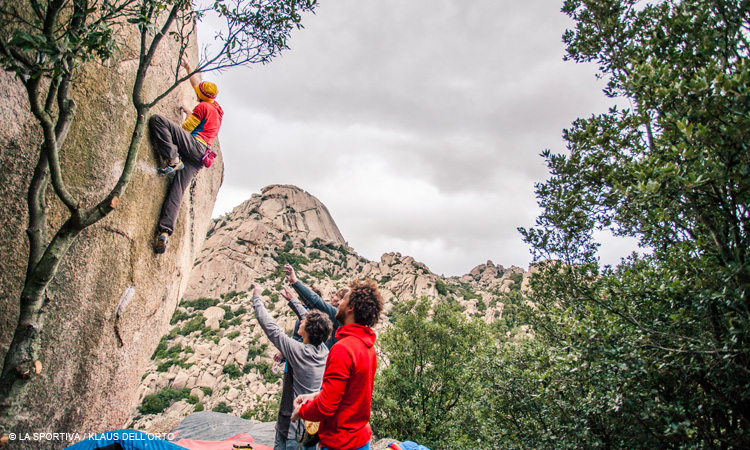
Required Equipment: climbing shoes, chalk bag (for the ground) & crash pad
Deep Water Soloing
As with bouldering, no belaying devices or climbing protection are used when Deep Water Soloing, short DWS. However, the rock faces are located above the sea, over lakes or rivers – everywhere the water is deep enough. In case of a fall, the climber thus lands safely in the water. Popular spots for DWS are, for example, the cliffs of Majorca or Greece.
Required equipment: climbing shoes, chalk bag
Via Ferrata
Via ferratas are secured hiking or climbing routes in the mountains. It is less about free climbing, but much more about working your way up by using permanent security elements, such as ladders and steel cables.
Required equipment: via ferrata set, climbing harness, helmet and approach shoes
→ Click here for the detailed via ferrata packing list.
Ice Climbing
Ice climbing is a special challenge for every climber. In winter, frozen waterfalls, but also flat ice fields are climbed with the help of crampons and ice picks. When ice and rock alternate, it is called mixed climbing. In addition to the ice climbing equipment you then also need rock climbing protection.

Required equipment: crampons, ice screws, ice picks, harness, half rope, express sets, carabiners,belaying device, helmet & crampon proof boots.
Drytooling
Drytooling is something for real specialists. This involves climbing on the rock with ice climbing equipment. That is, the climbers wear crampons and use different ice axes than in ice climbing. But be careful: under no circumstances should you climb on normal climbing routes with ice equipment, as this damages the rock – there are designated areas and sectors for this.
Required equipment: crampons, ice tools, climbing harness, half rope, express sets, carabiners, belay device, helmet & crampon proof mountaineering boots.
More Information:

